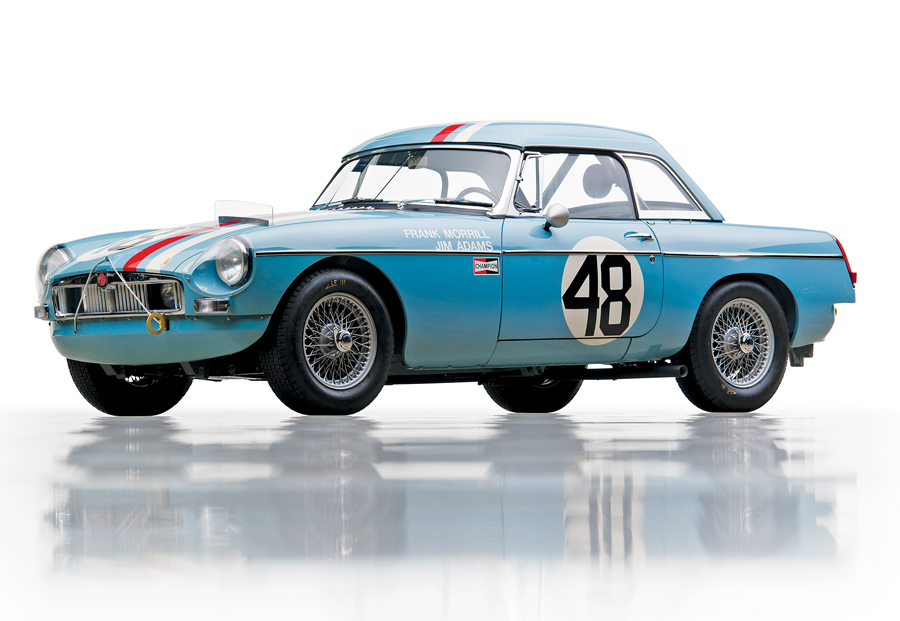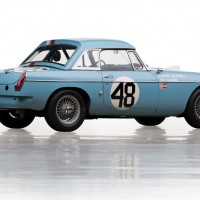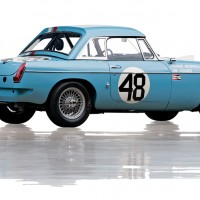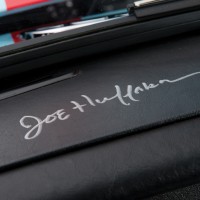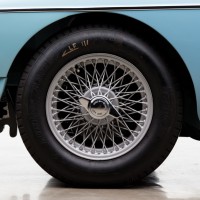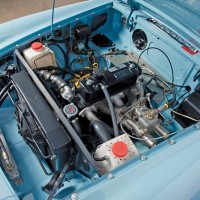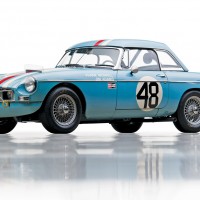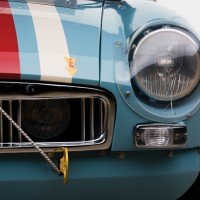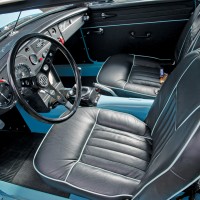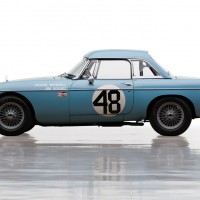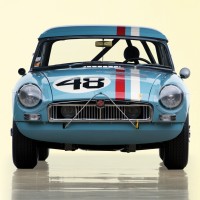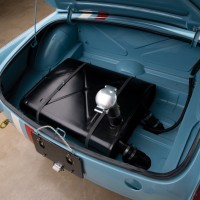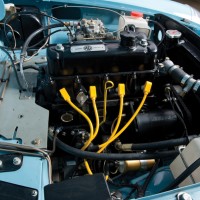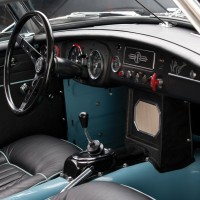SCM Analysis
Detailing
| Vehicle: | 1962 MGB Sebring Lightweight |
| Years Produced: | 1962–67 (Series 1) |
| Number Produced: | 387,675 (Sebring racers: three) |
| Original List Price: | $2,700 |
| SCM Valuation: | $21,000–$30,000 |
| Tune Up Cost: | $600 |
| Chassis Number Location: | Tag on firewall |
| Engine Number Location: | Tag on right side of block |
| Club Info: | American MGB Association |
| Website: | http://www.mgbclub.org/ |
| Alternatives: | 1960–61 Alfa Romeo SZ-1, 1956–59 Porsche 356A Carrera, 1963 Abarth Simca 2000 |
| Investment Grade: | B |
This car, Lot 220, sold for $88,000, including buyer’s premium, at RM Sotheby’s Andrews Collection auction on May 2, 2015.
The first rule of both antiques and car collecting has always been: “What was special then is special now; what was ordinary then may be rare now, but collectible? Not so much.” So what do we make of a very special variant of a common-as-dirt car like an MGB? How much value and desirability can history and some special factory parts give to a car that makes most people stifle a yawn?
I first wrote about this car in the fall of 2004 (December 2004, “Race Profile,” p. 42) after my friend Butch Gilbert sold it at RM Monterey for $104,500, and it is interesting to revisit it 11 years later. The car itself hasn’t changed a bit. I don’t think it has even seen substantial use in those years, but I will argue that the market has changed and continues to change relative to the assumed value that a competition résumé gives to an otherwise ordinary car.
I don’t mean to besmirch the MGB at all. It was an excellent car that was designed, produced, and sold as an affordable sports car that provided the greatest value to the greatest number of customers. In 1962, they sold new for $2,700, about the same as a mid-line Chevy Bel Air. They were stylish, comfortable, dependable, fast enough, and state of the art, with unibody construction, roll-up windows and a top that actually kept the rain out and most of the heat in on a cold day.
They sold a ton of them: more than half a million between 1962 and 1980 if you include the variations that evolved. The MGB ended up being probably the most successful English sports car in history. They just weren’t very exciting — they were the blind date your aunt set you up with: pretty, competent, everybody’s friend — but where was the hormone rush?
Anything but ordinary
But I digress. The MG division of BMC had a long and proud history of racing success and had every intention to continue it with the new MGB. Their motto at the time was “Safety Fast,” and with the vast majority of their market in the U.S., it made sense to try for a high-profile result in an American race like Sebring.
The international FIA rules in place for Sebring were much more permissive than SCCA production rules would allow, so the three cars destined to run there in 1964 got aluminum bonnets, doors, and boots (trunk lid), dual gas tanks, a factory close-ratio transmission, and a host of minor-but-special bits to make it a proper racing car. Aside from the Weber carburetor and headers, the engine looked stock outside, but inside had every go-fast part and trick that the factory and Joe Huffaker could come up with.
The three Sebring cars were anything but ordinary.
Brought all the way back
As the new century dawned and “Y2K” panic faded to a memory, Butch Gilbert, an MG and Elva restoration and racing guru of serious repute, decided to track down the original three Sebring MGBs. He was successful in finding two of them, the red one and the blue one (white disappeared somewhere in the 1980s), and set about restoring them to their original glory.
Both had lost their aluminum body panels and distance racing parts — which were not legal for U.S. racing, so they were removed — but all of the bits for the blue car had been carefully preserved, and Butch was able to reinstall them.
The red car was restored with fewer original parts. After racing them as a pair in several high-profile vintage events, it was time to move on, so they were both sold at the RM Monterey auction in 2004. Both cars returned by far the highest sales prices ever seen for an MGB, but the red car sold for $60,500 — a fraction of what the blue one made.
Shifts in the market
In 2004, the most desirable street MGB in the world (ex-Grace Slick of Jefferson Airplane) made about $19,000, so the blue Sebring car made a collector’s premium of about five times normal. In 2015, the same car sold for $88,000, while SCM’s Pocket Price Guide shows $30,000 for the best MGB, so the collector’s premium has dropped from five times to three.
Meanwhile, the premium for buying an Alfa GTA (basically an aluminum-bodied racing GTV) versus a GTV has remained about constant at five times normal, and the premium for a Porsche 356 Abarth versus a street 356 has skyrocketed.
Something important is going on here.
I propose that two major factors have changed in the market over the past decade or so:
First, the market has matured, and second, it has softened substantially in the past year. When I say matured, I mean that buyers are far more careful about what they buy and why they buy it — particularly in the lower ranges of value. There was an optimistic attitude 10 years ago that anything rare or special was prima facie a good investment and would at minimum hold its value. I don’t see that any more.
In the “ordinary mortals” side of the market, what you can do with a car and how it presents to the world means more — and its imagined historical importance means less than it used to. Even the sexiest MGB is going to suffer in this context. Second, it is my opinion that except for the 1% cars, the market peaked between one and two years ago, and it is now in general if gentle decline. It’s still a good time to buy, but buy cars to use, not to hold.
The best MGB — but still an MGB
So what are we to make of an $88,000 MGB? There is no doubt that it is the most valuable and collectible MGB in the world, and it is still cheap compared with cars of equivalent history and performance. In 1964, this car lost Sebring to two Porsche-Abarths and finished well ahead of an Alfa TZ — but it is still an MGB. Was it well bought or well sold? The verdict depends on the intent of the buyer: As a fun and important vintage racer it was fairly bought; as an investment it was very well sold. ♦
(Introductory description courtesy of RM Sotheby’s.)
